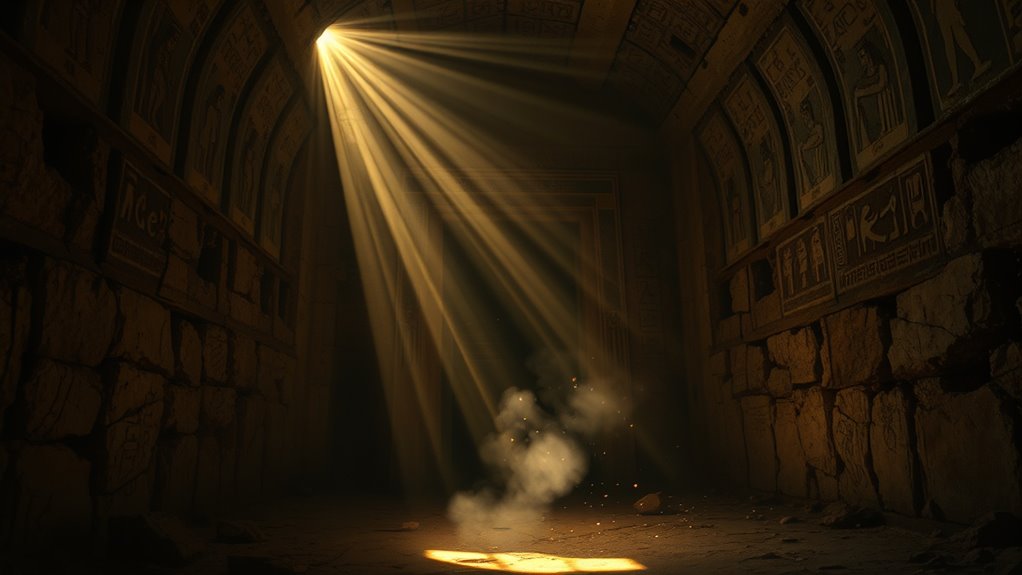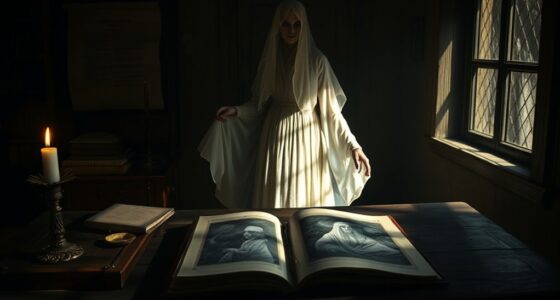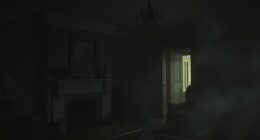The legend of ancient Egypt’s cursed tombs mainly stems from the discovery of Tutankhamun’s tomb in 1922. Many believed a curse struck those who violated the pharaoh’s resting place, especially after Lord Carnarvon’s untimely death. However, real curses were rare and aimed at protecting the deceased. Scientific studies suggest dangerous pathogens in tombs posed health risks, not supernatural vengeance. Intrigued by how myths evolved and the true nature of these tombs? There’s more to uncover.
Key Takeaways
- The legend of cursed tombs gained popularity after the discovery of Tutankhamun’s tomb in 1922, particularly following Lord Carnarvon’s mysterious death.
- Most ancient Egyptian tomb inscriptions served as legal warnings rather than actual threats, aiming to protect the deceased from disrespect.
- Media sensationalism exaggerated tales of “curses,” misrepresenting ancient Egyptian beliefs and linking them to misfortunes following tomb discoveries.
- Scientific studies reveal health risks from toxic pathogens, like Aspergillus niger, found in tombs rather than supernatural curses.
- Real curses in ancient Egypt targeted wrongdoers, with examples like Thutmose I’s curse deterring disrespect to the deceased and their monuments.
The Origins of the Tomb Curse Legend
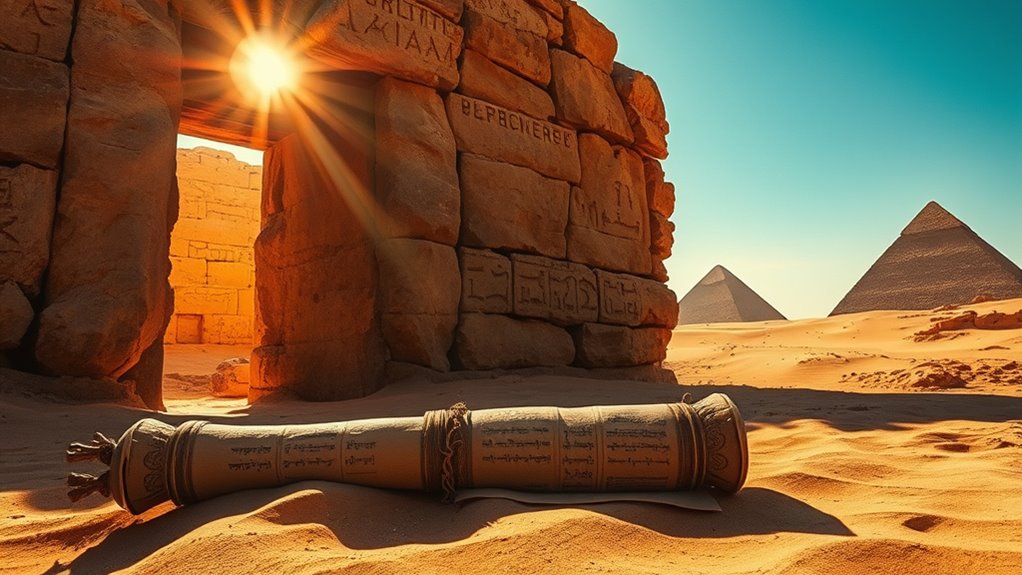
Although the legend of tomb curses might seem like an ancient tale steeped in mystery, it really gained traction with the discovery of Tutankhamun’s tomb in 1922.
When Lord Carnarvon died shortly after this monumental find, sensationalist media quickly spun a narrative linking his death to a supposed curse. This idea captivated the public, even though actual tomb curses are rare and typically resemble legal warnings rather than threats.
The phrase “curse of the pharaohs” started to describe various misfortunes, fueled by the media’s portrayal and widespread speculation about supernatural forces.
In reality, scientific explanations suggest toxic pathogens may have played a role. Nonetheless, this narrative persists, capturing imaginations around the mysteries of the Valley of the Kings.
The Discovery of Tutankhamun’s Tomb
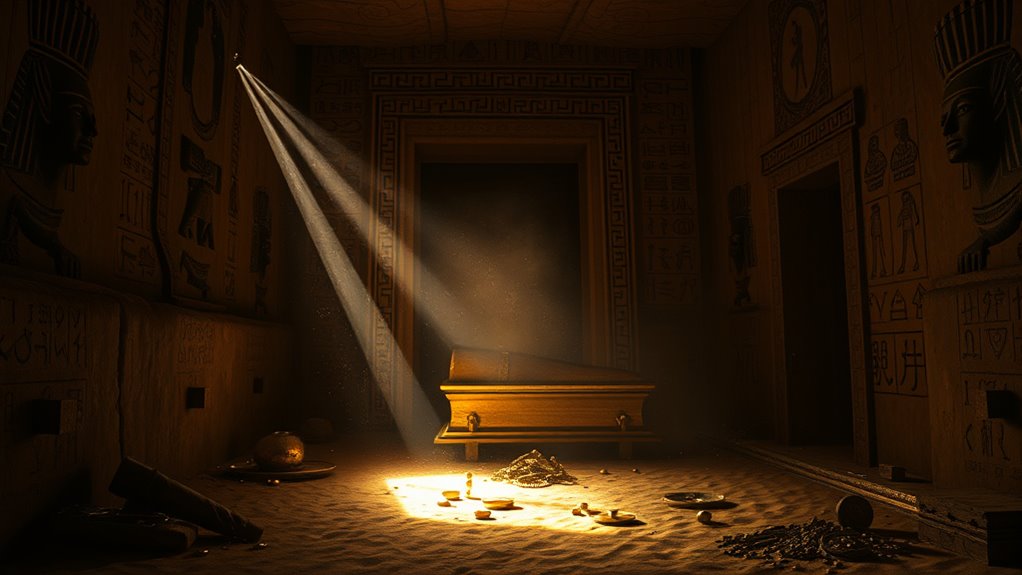
The discovery of Tutankhamun’s tomb in late 1922 by Howard Carter marked a groundbreaking moment in archaeology and ancient history.
Located in the Valley of the Kings near Luxor, the tomb was found almost entirely intact, revealing a wealth of artifacts that showcased the culture of ancient Egyptians. Inside, you’d find religious objects, stunning wall paintings, and inscriptions that provided invaluable insights.
However, the excitement quickly turned into a media sensation with whispers of a curse. After Lord Carnarvon, Carter’s financial backer, died shortly after the tomb’s opening, stories of the so-called “Curse of the Pharaohs” spread.
Despite this, Carter dismissed the notion as “tommy rot,” living a long life himself and continuing to study ancient Egypt.
Misconceptions and Media Sensationalism
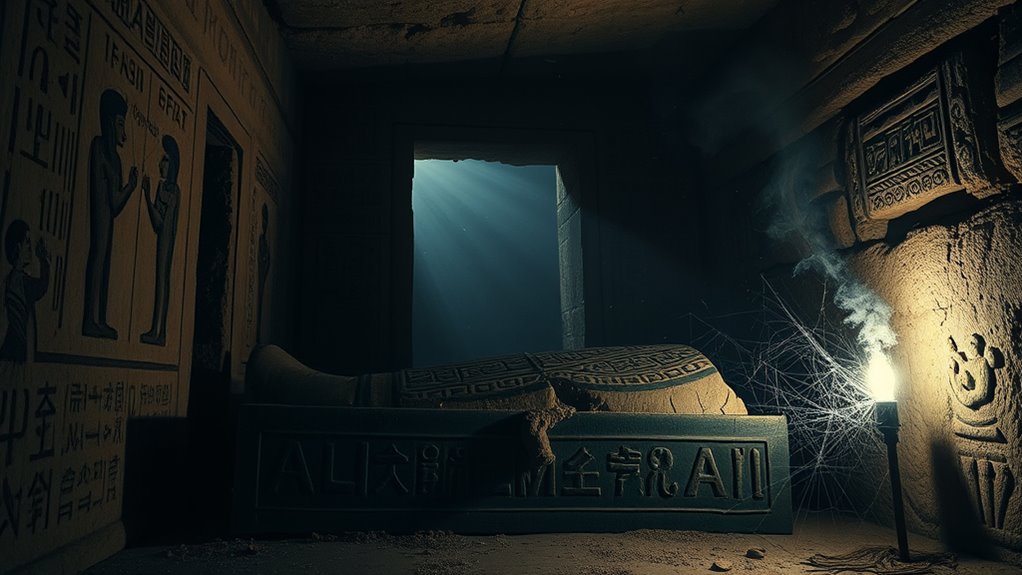
Misconceptions about ancient Egypt’s tombs often stem from the sensationalism of early 20th-century journalism. The discovery of Tutankhamun’s tomb in 1922 sparked widespread tales of tomb curses, especially after Lord Carnarvon’s death.
Media outlets exaggerated claims, linking his demise to supposed inscriptions that threatened misfortune, despite it being due to a mosquito bite. This misrepresentation fostered deep-rooted misconceptions about ancient Egyptian beliefs, as experts’ statements were taken out of context.
Most tomb inscriptions served as legalistic warnings, encouraging respect for the dead rather than invoking curses. The persistence of the “curse of the pharaohs” in popular culture highlights how media sensationalism has distorted understanding, blending myth with a lack of accurate historical context.
Scientific Explanations for the Alleged Curses
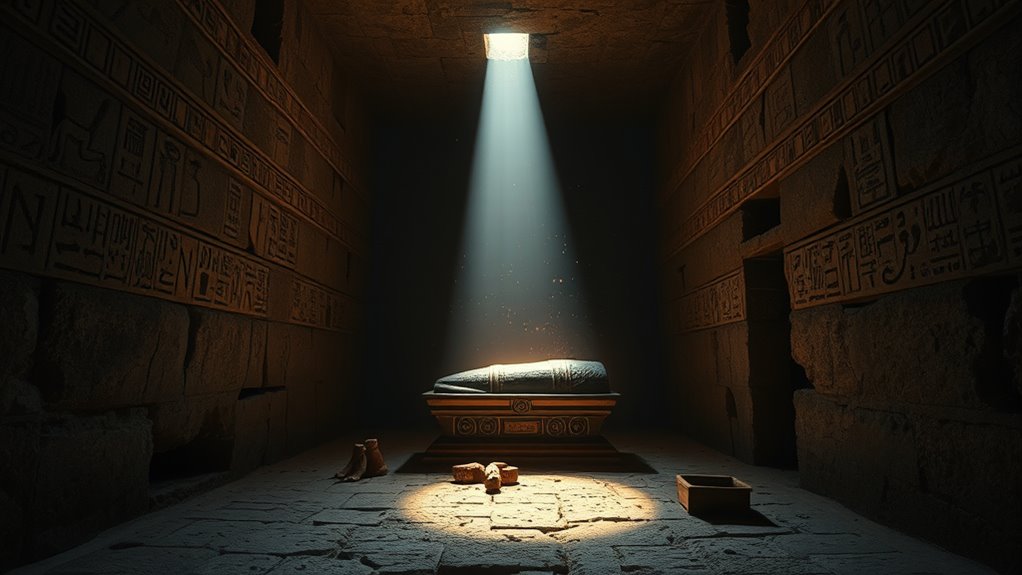
While tales of curses surrounding ancient Egyptian tombs often capture the imagination, scientific research provides a more grounded explanation for the health risks faced by explorers and archaeologists.
Toxic pathogens like Aspergillus niger have been found in Tutankhamun’s tomb, posing serious health threats. A 2013 study revealed pore-forming bacteria on the walls, indicating ancient tombs can harbor harmful biological agents.
Other toxins, including Pseudomonas and ammonia, contribute to potential dangers during excavation. Those entering these tombs might also face histoplasmosis, a respiratory disease linked to bat droppings.
Instead of a mummy’s curse, it’s the hazardous environment that presents real health risks, reminding us of the perils hidden within these ancient structures.
Real Curses in Ancient Egyptian Culture

Though often sensationalized in popular culture, real curses in ancient Egyptian culture served a distinct purpose: to protect the deceased from wrongdoers. Inscribed primarily on private monuments, these curses aimed to deter any disrespect towards the deceased, ensuring they received the honor they deserved.
For instance, Thutmose I’s curse targeted those who spoke ill of Hatshepsut, showcasing the power of the written word. These curses often included threats of punishment for those who violated the sanctity of the tomb.
In contrast, royal tombs featured Pyramid Texts focused on providing protection and assistance in the afterlife. Overall, curses played a significant role in maintaining respect for the deceased and the integrity of their monuments, ensuring their legacy endured.
Frequently Asked Questions
What Is the Most Cursed Tomb in Egypt?
When you think about the most cursed tomb in Egypt, many people immediately mention the tomb of Pharaoh Tutankhamun.
Its discovery in 1922 led to a flurry of mysterious deaths among those involved in the excavation, fueling tales of a curse.
However, it’s essential to contemplate that these stories often stemmed from sensationalism, and scientific explanations, like toxic molds, could be the real culprits behind the health issues faced by explorers.
Which Pharaoh’s Tomb Is Supposed to Be Cursed?
When you think of cursed tombs, you might picture eerie mummies and ancient warnings. The tomb of Pharaoh Tutankhamun is often considered the most famous for its supposed curse.
After its discovery in 1922, a series of unexplained deaths among those who entered sparked wild rumors. Yet, it’s not just superstition; some suggest toxic mold or bacteria played a role.
Why Is Tutankhamun’s Tomb Cursed?
You might wonder why Tutankhamun’s tomb is considered cursed. The narrative began when Lord Carnarvon died shortly after its discovery, which sparked sensationalist media coverage.
Reports of mysterious illnesses and deaths among those involved fueled the curse myth. While some scientists suggest toxic fungi in the tomb may have caused health issues, many, including the archaeologist Howard Carter, lived long lives, leading you to question the validity of the curse.
Who Was Allegedly Cursed by Tutankhamun’s Tomb?
You’ve likely heard tales of mysterious deaths linked to the legendary curse of a certain tomb. Allegedly, Lord Carnarvon met his end due to a mosquito bite, while Prince Ali Kamel Fahmy Bey was shot by his wife shortly after the tomb’s discovery.
Sir Archibald Douglas Reid died soon after X-raying the mummy, and Sir Lee Stack faced assassination.
Yet, many associated with the excavation lived long lives, making the curse seem more like myth than reality.
Conclusion
In the shadow of ancient Egypt’s splendor, the allure of cursed tombs captivates the imagination, blending fear with fascination. While tales of misfortune linger in the air, science discloses a different narrative, revealing the mundane realities behind the legends. You stand at the crossroads of myth and truth, where the echo of pharaohs meets the rationality of modern inquiry. Ultimately, it’s this juxtaposition that enriches our understanding, allowing you to appreciate both the mystery and the history of these hallowed grounds.
